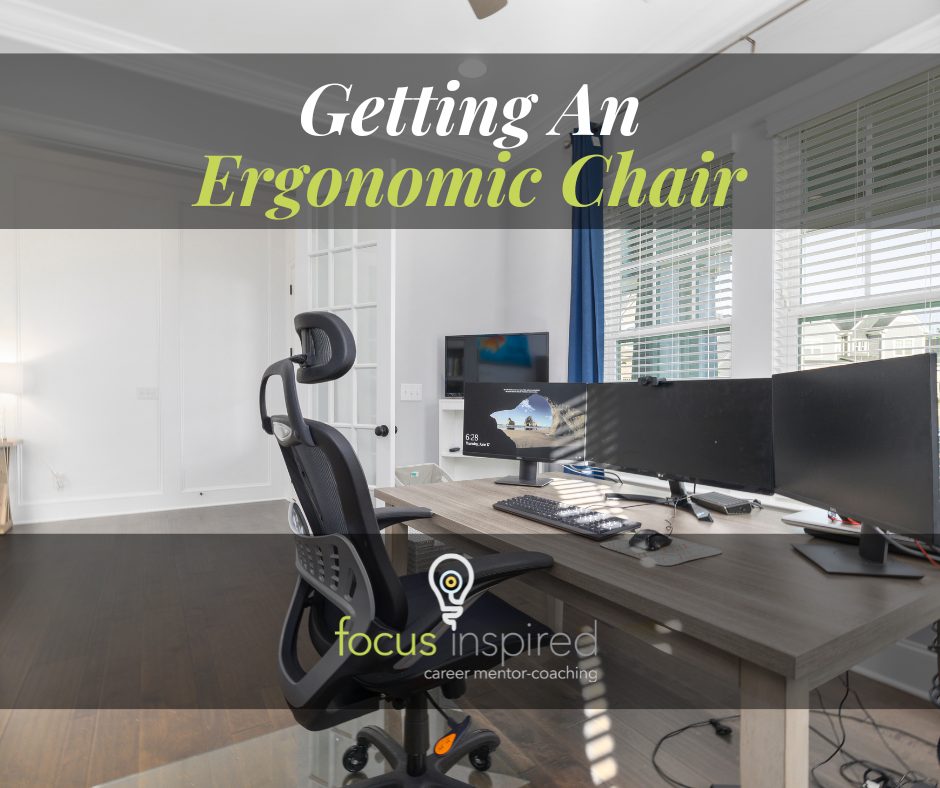
Getting An Ergonomic Chair
Have you been working from home and using a kitchen chair you borrow from the kitchen every day? Are you actually working in the kitchen every day?
We’ve all heard about ergonomic products, from a desk to a keyboard and mouse to ensure you are putting the least amount of strain on your body as possible during repeated long multi-hour workdays behind a desk. Yes, you can strain your body just by sitting!
There are many different ergonomic products you can buy, and this blog will be the start of a few different topics on ergonomic products, but today we shall talk about the chair!
What should you look for in an ergonomic chair?
1. Fully Adjustable
An ergonomic chair should be able to adjust to your body and suit your needs. At minimum, you should have a chair that has:
- Adjustable height to ensure your legs are at a 90 degree angle above the knee to below the knee, your feet are flat on the ground, and your arms rest at a neutral position that allows you to comfortably type with minimal movement.
- Adjustable arm rests to ensure you are able to maintain your resting arms for long periods of time. Ideally they at least move up and down, but some chairs allow you to swivel from side to side.
- Adjustable back to ensure you are able to sit with proper upright posture while at the keyboard, rather than hunched forward or tilting backwards.
2. Proper Casters
Did you know that there are different wheels for your chair that depend on which type of flooring you have? If you have a carpet or a rug, carpet casters are usually a softer plastic with guards that glide better over these softer surfaces, and don’t snag quite as easily. Hardwood casters are usually a different shape and have a rubber or rubber-like substance that makes contact with the floor, giving you greater grip while also not damaging the floor. Each type of caster is specifically designed for each type of floor, and you will find that it will be much easier to adjust when you have the right wheels for the job.
3. Extra Features
There are a few quality-of-life bonuses that you can get on your chairs that can make the difference between a good ergonomic chair and a great one. While these aren’t truly necessary, they are great additions to any chair and would be features I would highly consider for my ergonomic chair:
- Adjustable Lower Back: There are a number of solutions out there for this, including a crank that is static in terms of height but moves that part of the chair inwards and outwards, a sliding support that doesn’t move in and out but instead goes up and down to sit right in the small of your back, and some more complex versions that have both.
- Adjustable Seat: On some chairs, you will have the ability to slide the seat forwards or backwards to ensure it is two fingers away from the insides of your legs. Others will have seats that tilt forwards and backwards (while the backrest stays stationary) to allow you to alleviate some pressure from the backs of your legs as well. Remember: your feet should be flat on the floor, and that should allow you to take some pressure off the backs of your legs by tilting the seat away from them.
- High Backs: This may not be for everyone as there are a lot of people who prefer their chair to only support them to their shoulders and no higher, but high back chairs with a headrest and extra shoulder support can be a lifesaver for many people. I certainly enjoy having my high-backed chair as a constant reminder of how to sit with proper posture.
I would definitely suggest finding online guides, diagrams, or videos that put you through the process of setting up your ergonomic chair. What might feel right to you may have some unintended consequences down the road. Some companies also have budgets to have ergonomic assessors come in and teach you how to set up your chair to suit your specific ergonomic needs. If your company has a budget for this, take advantage of it! You will definitely thank yourself later!
Follow:Share: